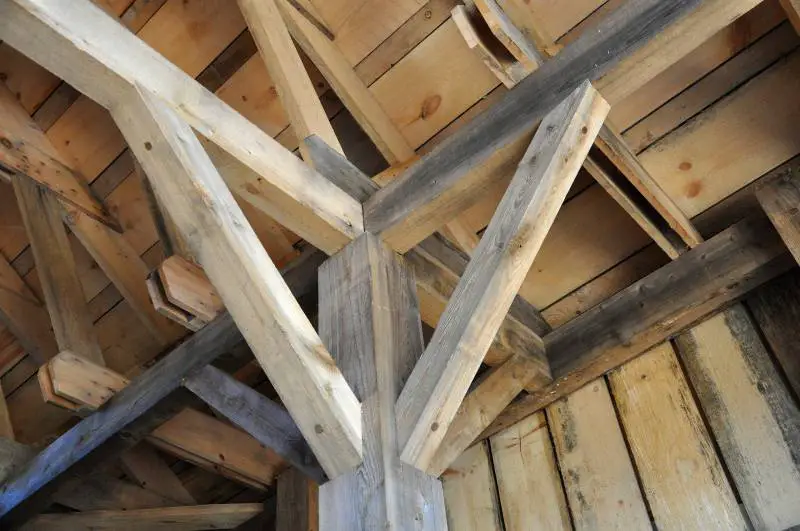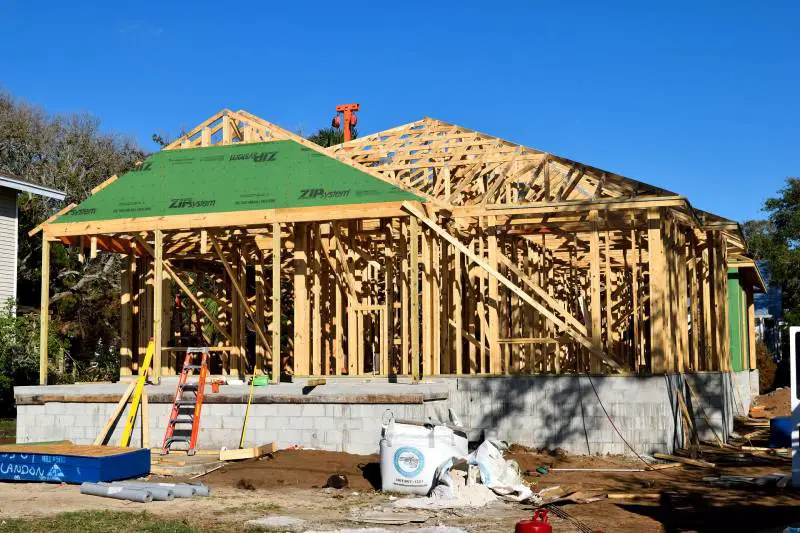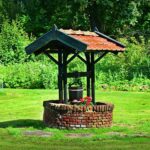Table of Contents
Screws and nails for framing provide adequate protection from any damage if they are installed correctly.

Depending on the framing you are doing, one option may be better than the other. Let’s examine the advantages and disadvantages of using nails and screws in framing for sheds, decks, interiors, and more below.
Are Screws or Nails Better for Framing?
Nails for framing are inexpensive when compared to the cost of other materials, but they must be used properly during framing.
Purchasing materials for the interior and exterior of houses that will last for years and then using nails that will rust severely in a few years is a poor investment.
Rust-resistant nails will keep the materials in place indefinitely and will not stain light-colored paint.
There are two sorts of nails for framing: one with a tiny head and the other with a somewhat bigger head.
About 1/16 inch below the surface of the siding, the small head casing nail is placed (driven with a nail set) on the shed, deck, or interior.
After the primer layer of paint is applied, the hole is repaired with putty.
The large-head nail is driven flush with the siding’s face, then painted over the head. Ordinary steel wire nails tend to rust quickly and leave a disfiguring stain on the siding’s face. The small head nail may exhibit rust spots through the putty and paint in some circumstances.
Similar to nails, screws also need to be appropriately used during framing.
Noncorrosive screws (galvanized, aluminum, and stainless steel) are widely available and do not leave rust marks.
Noncorrosive screws should be used to face-nail bevel siding to each stud, the size varying based on the thickness of the siding and the kind of sheathing utilized.
Screws are typically positioned approximately 1 inch above the edge, passing through the upper edge of the lower course of siding.
The technique allows the siding board to expand and contract in response to seasonal variations in moisture content.
What Types of Nails or Screws are the Best for Framing?
The majority of nails and screws are made of steel, although they can come in a variety of finishes. Bright nails/screws that have no coating or polish and are suitable for most framing connections that aren’t visible from the outside, and they’re generally less expensive than other options.
Coated framing nails/screws are widely available in most locations.
The vinyl or resin covering on these nails/screws makes them simpler to drive. As the nail/screw is pushed, the coating melts to give lubrication and then hardens to improve the gripping power.
Should I Use Screws or Nails for Framing a Shed?
Nails are usually used for framing a shed as they are robust, quicker (particularly with a nail gun), and less expensive than screws.
The framework’s skin, whether it’s plywood, plasterboard, or anything else, is usually screwed to it, and it’s the skin that gives a lot of stiffness.
Screws may be more useful for sheds where stiffness or strength is required.
They are also preferred where delicate material is used, such as when building a roof canopy. Certain areas of a shed can also be used for framing with screws, while others can be framed with nails.

Should I Use Screws or Nails for Framing a Deck?
Screws are typically attached to the top and sill plates of a deck. They offer a stronger connection than a thick gauge ring shank nail on the frame or a ring nail on ply sheeting.
Nails provide some flexibility in frame movement, and while a screw is more likely to shatter under pressure, this is exceedingly unusual.
When it comes to the internal framing of a deck, screws are almost entirely utilized since they are commonly used when installing door frames, bulkheads, and other similar items where they give a considerably higher degree of accuracy when packing and fastening, as well as the ability to remove them and modify the workpiece more easily.
Screws have higher tensile, shear, and twist resistance than nails.
They have a larger initial clamping power. Nails do not have high resistance; however, a gas-fired nail gun is adhesive and has comparable clamping power.
Although nails may be considered easier to use when framing a deck, screws are a speedier, affordable, and durable option.
Nails may, however, be used in some areas of a deck, such as timber connections and roofing.
Because of inadequate connections to the house, ledgers for porch flooring and decks have been a key weak spot in home building during the previous few decades.
People may be hurt if this link fails. So, instead of nailing or screwing a ledger to the sheathing, always screw or bolt it to the house’s floor structure.
Should I Use Screws or Nails for Framing the Interior?
In most cases, nails are necessary for internal structural wood construction.
In the United States, if an inspector notices screws in structural walls, you must disassemble them and reinstall them with nails.
Screws have a higher pullout resistance than nails, although they have a lower shear resistance.
Work screws are composed of tougher and hence brittle steel to create the heads and threads. Under tension, they will snap, whereas nails will only flex.
Because there are no typical pressures pushing the wall apart, pullout resistance is not required in wall assemblies.
Shear failure is a concern, especially during earthquakes or powerful storms that can cause walls to collapse.
Screws and nails both offer strong results for framing the interior. It’s best to consider the materials used in the interior before deciding between screws or nails.
Should I Use Screws or Nails for Framing a Timber?
Timber framing joinery, such as a scarf, mortise-and-tenon, and rabbet joints, originated before metal fasteners became accessible, and their traditional use persisted when metal spikes would have been prohibitively costly.
The majority of timber framing isn’t done using wooden pegs, mortise-and-tenon joints, and other “traditional” methods.
Most builders, contractors, and owner-builders rely on alternative means of connecting, such as truss plates, screws and bolts, pole-barn nails, and even gravity, since the introduction of very affordable mechanical fasteners.
The issue is that there is a scarcity of knowledge on how to connect massive timbers using these techniques.
Heavy timber construction, on the other hand, benefits many of the natural building methods that are regaining popularity today, such as nails and screws, because these methods can be used for timber walls.
There is also a significant practical benefit to first creating a wood frame, covering it with a protective roof, and then filling the structure with one or more natural — and generally slow — construction processes.
Should I Use Screws or Nails for Framing a House?
Builders creating a frame technique in houses can make excellent use of smaller, more easily accessible nails.
Instead of interlocking joinery and pegs, house frames can be joined together with nails, and even a carpenter with basic abilities could complete the job.
Instead of hefty, widely spread timbers, the frame in houses use lighter, closer-spaced pieces of wood.
The majority of connections in a house frame are formed using a limited number of nail kinds and sizes, but it’s vital to utilize the correct ones.
Building codes, in reality, define the size, kind, and number of nails that must be used for each frame connection.
Conclusion
Nails and screws have different uses and offer long-term durability when it comes to framing.
Now that you know about the benefits of using screws or nails for framing, we hope that you can carry out your next project with ease.








